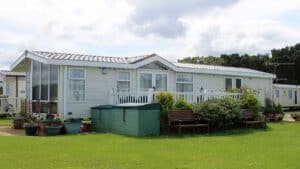As homeowners, we often focus on creating a comfortable and aesthetically pleasing living environment. However, one aspect that is often overlooked is the quality of the air we breathe indoors. Indoor air pollution can have a significant impact on our health, leading to respiratory problems, allergies, and other health issues. This is where the importance of indoor air quality comes into play. You’ve seen those portable air-purifiers, but the question is; Can you add an air purifier to your HVAC system? Most likely you can, but first lest talk a bit more about your HVAC system and why air purification is so important.
Indoor air quality refers to the level of pollutants present in the air inside our homes. These pollutants can include dust, pet dander, mold spores, volatile organic compounds (VOCs), and even bacteria and viruses. Breathing in these pollutants can have detrimental effects on our health, especially for those with pre-existing respiratory conditions or weakened immune systems.
What is an HVAC system?
Before we delve into the integration of an air purifier into your HVAC system, let’s first understand what an HVAC system is. HVAC stands for Heating, Ventilation, and Air Conditioning. It is a system that helps regulate the temperature, humidity, and air quality within a building. An HVAC system typically consists of a furnace or heat pump, air conditioner, ductwork, and vents.
The primary function of an HVAC system is to provide thermal comfort and maintain indoor air quality. It accomplishes this by circulating and filtering the air in your home, keeping it at a comfortable temperature and removing pollutants. However, the standard filters used in HVAC systems may not be enough to effectively eliminate all airborne contaminants.
What is an air purifier?
An air purifier is a device designed to remove pollutants from the air. It works by drawing in air, passing it through filters or other purification mechanisms, and releasing clean, purified air back into the environment. Air purifiers can effectively remove a wide range of pollutants, including dust, pollen, smoke, pet dander, and even certain bacteria and viruses.
There are various types of air purifiers available on the market, including standalone units and in-duct air purification systems. Standalone air purifiers are portable devices that can be placed in specific rooms to improve air quality. In-duct air purification systems, on the other hand, are integrated into your HVAC system and work alongside it to purify the air throughout your entire home.
Benefits of integrating an air purifier into your HVAC system
Integrating an air purifier into your HVAC system can provide several benefits for your indoor environment. Firstly, it ensures that all the air circulating through your home is filtered and purified, rather than just the air in a specific room. This helps maintain consistent air quality throughout your entire living space.
Additionally, an in-duct air purification system can help alleviate allergies and respiratory issues by removing allergens and irritants from the air. This is particularly beneficial for individuals with asthma, allergies, or other respiratory conditions. By reducing the presence of these triggers, it can significantly improve their quality of life and overall health.
Furthermore, integrating an air purifier into your HVAC system can also help prolong the lifespan of your HVAC equipment. Airborne particles, such as dust and pet dander, can accumulate within your HVAC system, leading to reduced efficiency and potential breakdowns. By filtering these particles out before they enter the system, an air purifier can help maintain the performance and longevity of your HVAC equipment.
How does an in-duct air purification system work?
Now that we understand the benefits of integrating an air purifier into your HVAC system, let’s take a closer look at how these in-duct air purification systems actually work. In-duct air purification systems are installed directly into your existing HVAC system, typically near the air handler or furnace.
These systems use advanced technologies to purify the air as it flows through the ductwork. One popular technology used in in-duct air purification systems is called photocatalytic oxidation (PCO). PCO technology utilizes a combination of UV light and a catalyst to create a chemical reaction that neutralizes pollutants, such as VOCs and bacteria.
Another commonly used technology is ionization, which releases ions into the air that attach to and neutralize particles. This helps remove contaminants from the air, making it cleaner and healthier to breathe. In-duct air purification systems may also include additional filters to capture larger particles, such as dust and pollen.
Can you add an air purifier to your HVAC system?
The answer to this question depends on the specific design and compatibility of your HVAC system. In most cases, it is possible to add an air purifier to an existing HVAC system. However, it is important to consult with a professional HVAC technician to assess the feasibility and compatibility of integrating an air purifier into your specific system.
Factors such as the size of your HVAC system, the available space for installation, and the electrical requirements need to be taken into consideration. Additionally, the type of air purifier and its compatibility with your HVAC system should also be evaluated. A professional HVAC technician can guide you through this process and recommend the most suitable air purifier for your needs.
The process of integrating an air purifier into your HVAC system
Integrating an air purifier into your HVAC system typically involves the following steps:
- Assessment: An HVAC technician will assess your existing HVAC system to determine its compatibility with an air purifier. They will also evaluate the specific air quality concerns in your home and recommend the appropriate type of air purifier.
- Installation: If your HVAC system is compatible, the technician will proceed with installing the air purifier. This may involve making modifications to the ductwork or finding a suitable location for installation.
- Electrical connections: Depending on the type of air purifier, electrical connections may need to be made to power the system. This is typically done by connecting the air purifier to the electrical supply of your HVAC system.
- Testing and calibration: Once the installation is complete, the technician will test the system to ensure it is functioning properly. They will also calibrate the air purifier to optimize its performance and efficiency.
Factors to consider before integrating an air purifier
Before integrating an air purifier into your HVAC system, there are several factors you should consider:
- Air quality concerns: Identify the specific pollutants or allergens you want to address with an air purifier. This will help determine the type of air purifier and filtration technology that is most suitable for your needs.
- HVAC system compatibility: Consult with a professional HVAC technician to assess the compatibility of your HVAC system with an air purifier. They can recommend the most suitable options based on your system’s design and specifications.
- Maintenance requirements: Understand the maintenance and upkeep requirements of the air purifier and factor them into your decision-making process. Regular cleaning and filter replacements may be necessary to ensure optimal performance.
- Cost considerations: Evaluate the cost of purchasing and installing an air purifier, as well as any ongoing maintenance expenses. Consider the long-term benefits and potential savings in terms of improved health and HVAC system performance.
Maintenance and upkeep of an in-duct air purification system
To ensure the continued effectiveness of your in-duct air purification system, regular maintenance and upkeep are essential. Here are some maintenance tasks you should consider:
- Filter replacement: Depending on the type of air purifier, filters may need to be replaced periodically. Follow the manufacturer’s guidelines for filter replacement frequency to maintain optimal air purification.
- Cleaning: Regularly clean the exterior surfaces of the air purifier to remove any dust or debris. This will help maintain proper airflow and prevent the accumulation of contaminants on the surface.
- Professional servicing: Schedule regular maintenance visits with a professional HVAC technician to inspect and service your in-duct air purification system. They can ensure that the system is functioning properly and address any potential issues.
Conclusion
Integrating an air purifier into your HVAC system can significantly improve the indoor air quality of your home, providing a cleaner and healthier living environment. By removing airborne pollutants and allergens, an in-duct air purification system can help alleviate respiratory issues and create a more comfortable space for you and your family.
If you are considering integrating an air purifier into your HVAC system, it is advisable to consult with a professional HVAC technician. They can assess the compatibility of your HVAC system, recommend suitable air purifier options, and ensure a proper installation. Contact American Air Cares today to get a REMO-HALO in-duct air purification system installed and breathe easier in your home.





